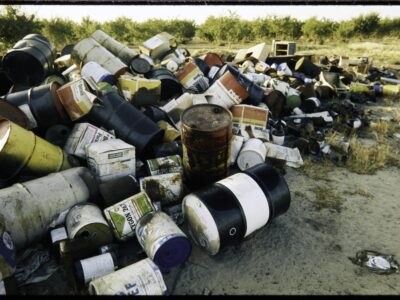UCLA releases new analysis of Proposition 26’s impacts to state environmental programs
As Sean has written, Proposition 26 hasn’t been getting as much attention in the media as other anti-environmental measures on next Tuesday’s California ballot, but it has the potential to be a real sleeper threat. UCLA Law just released a careful analysis of Proposition 26’s impacts to state funding for environmental and public health programs, concluding that it “would erect significant barriers to funding many of these programs in the future,” which “could have substantial and wide-ranging impacts on implementation of the state’s health, safety and environmental laws.”
The full report is available here.
Other key conclusions are that Proposition 26 would:
- Undercut the principle that polluters should pay for harms they cause. Proposition 26 would change a basic principle of state law allowing government to charge polluters up-front fees for the external costs they impose on the public, such as health risks and environmental harms. Proposition 26 would make it harder, for example, to impose some regulatory fees on hazardous products to address their adverse health effects on communities.
- Likely repeal at least two product sustainability laws. This year, the Legislature enacted AB 2398 and AB 1343, which would fund product stewardship programs to prevent bulky products and harmful chemicals from entering landfills. Proposition 26 would likely repeal these laws unless the Legislature reenacts them in compliance with Proposition 26’s stringent 2/3 supermajority requirement.
- Create a new barrier to ensuring that existing environmental and public health fees keep up with changing needs or with inflation. Legislative changes or updates to existing fees, which currently fund many environmental and public health programs, would require a 2/3 supermajority vote to enact unless they fall into one of the Proposition’s exceptions. The scope of the exceptions is both narrow enough and vague enough to risk the future of many fees.
- Undermine the establishment of stable funding streams for key state environmental efforts, like the Green Chemistry Initiative and the Global Warming Solutions Act, that have already been enacted but that are not yet well funded. The state currently uses regulatory fees—the type that would be transformed into taxes by Proposition 26—to help pay for its environmental and public health programs. Proposition 26 would make it harder to impose or revise fees to fund these programs in the future. For example, it would threaten future regulatory fees to fund the state’s new Green Chemistry Initiative, which is aimed at controlling exposure to hazardous chemicals.
Affect even revenue-neutral measures in unforeseeable ways. Proposition 26 requires a 2/3 vote not just on revenue bills, but on any legislation that results in a single person paying more tax. The Proposition’s language is worded quite broadly, transforming into a tax any change in statute that “results in any taxpayer paying a higher tax.” And under the Proposition’s new definition of “tax,” a bill that would cause even one business to pay a higher regulatory fee could be subject to the 2/3 vote requirement. It therefore could be read to define as a tax, for example, a proposal to reduce California taxpayers’ burden to pay for public health protection by charging a polluting industry for that protection.
Reader Comments
2 Replies to “UCLA releases new analysis of Proposition 26’s impacts to state environmental programs”
Comments are closed.







Ok, now I’m convinced this is the worst proposition on the ballot. Possibly the Worst. Proposition. Ever.